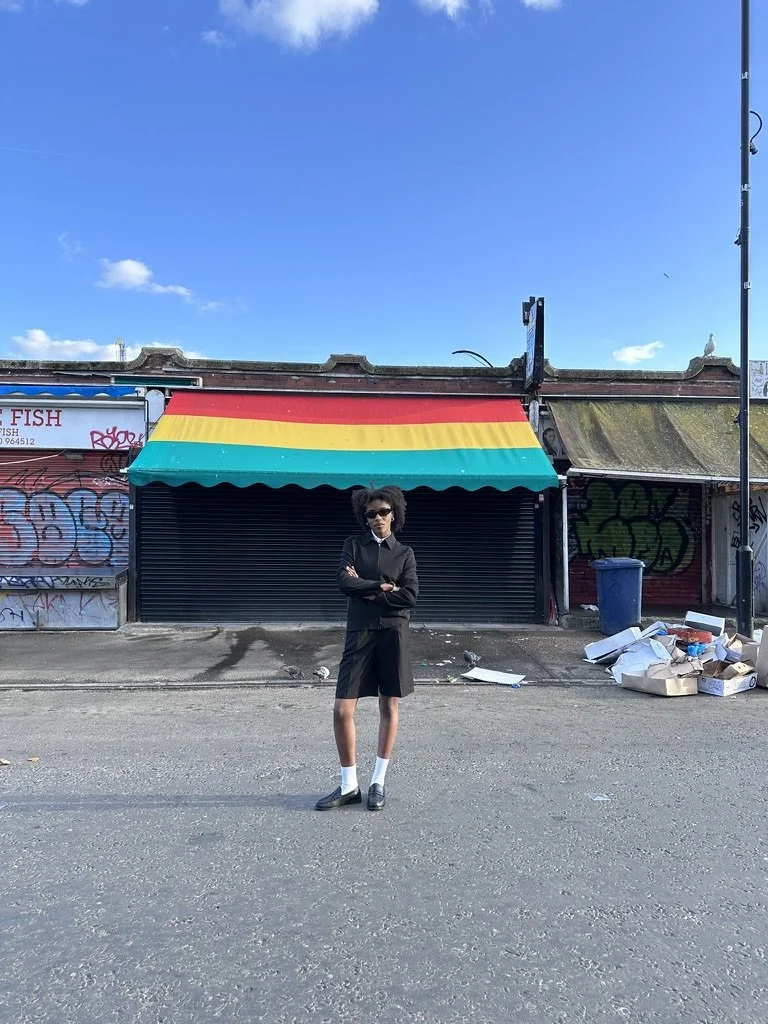La Sape
Clothing has always been used as a tool of resistance against hegemony/ La Sape was a political and fashion movement that can be traced to 1920s Brazzaville and Kinshasa, the capital cities of both Congos. However, the movement's growth accelerated around the late 1960s in Kinshasa, with singer Papa Wemba a key driver of this through his outspokenness against the regime of Joseph Mobutu. His regime had insisted on the restoration of true African values and had banned European clothing. The movement became characterised by its flamboyance and extravagance, allowing the tailored suits and bold colours to mark a recognisable stamp on Congolese fashion and informing what we know today as black dandyism.
When the ban on European clothing was issued in 1971, it initially gathered supporters predominantly in the younger generation because they envisioned it as a step toward an African socialist agenda that would diminish the influence of the old colonial bourgeois elite. This became one of the early pretexts of Mobutu’s regime, ‘L’authenticité’ - a pursuit that involved the restoration of ‘African values that were lost during colonialism’. As well as the banning of European clothing, other restorative methods included prohibiting non-African names for newly baptised children and assigning cities new names. While these measures strengthened a reclaimed post-colonial Congolese identity, many grew to oppose Mobutu’s actions, and part of this was that they saw his restrictions as an attempt to homogenise Congolese culture.
This ban galvanised the Sape movement, and both men and women would sport monochromatic suits paired with traditional African prints, adding dimension and character to the pieces. There was an intention to reclaim agency and reshape identity through encouraging Africans to embrace a global, fluid style of fashion while still resisting previous colonial rule.
The media played a key role in the movement's amplification through photographs, newspapers and magazine articles. Further, a documentary film contributed to the formation of the movement's visual identity and critically shaped the ties between La Sape culture and dandyism. The latter sprouted through a desire for self-expression and resistance during the Harlem Renaissance, also taking shape in the 1920s, and has been widely intertwined with La Sape through a shared global anti-colonial resistance.
The emergence of sapeurs was also intricately linked to recursive migration between Congo and Paris, originating in the post-war era when Congolese soldiers had returned from European war theatres and brought back French high-end fashion garments. Congolese fashion quickly became synonymous with movement across the diaspora and the interconnection of materials and patterns from across borders.
However, these patterns of migration reinforce the idea of fashion as currency because garments sourced overseas were naturally more desirable. When aestheticism as well as the garments themselves become commodified, it’s indicative of a Eurocentric value system. Mobutu recognised the importance of this when he banned westernised clothing, aiming to sever the country's colonial ties. So, while a dictator, it seemed his implementation of the banning of Western clothing was in the interest of his country’s cultural maintenance. In this way, he exhibited his form of resistance against coloniality through policing garments. Although this nationalist ‘resistance’ is controversially coated in irony given Mobutu's coup against Independence leader Patrice Lumumba, and subsequent policies during his rule until 1995.
As well as symbolism for an embrace of multiculturalism and the emerging migration between Congo, France and Belgium, La Sape resistance also represents retaliation against the increased sexual assault cases in the country. Women would emulate a masculine style, sporting three-piece suits and grandiose hats, shifting the landscape of the gender binary in fashion and asserting their dominance through androgyny. The fashion movement of the 1980s globally emulated a secondary yet equally crucial form of resistance against the exploitation of female bodies. The ‘power dressing’ through shoulder pads, bold colours and leather trench coats became popularised as the world witnessed the increase in women in traditional work spaces and would therefore emulate a masculine dress style because, of course, masculinity was synonymous with power and authority. ‘Mama Clementine’ was notably one of the first female sapeuses who was said to have integrated into the La Sape movement. In a shoot along the streets of Kinshasa, she was sporting short hair dyed bright yellow and lipstick only on her bottom lip, with a navy tie and bright red belt. She describes how she saw her clothing to be an armour against the sexual violence epidemic. Explaining that while it wasn’t a physical blockage, it was the concept of androgyny that accompanied La sape that became the tool of resistance because it combats the gender binary. She explains that while people would have their reservations about female sapeurs because they looked like lesbians, she didn’t care because she felt powerful.
La Sape was a cultural movement built on the rejection of Mobutu’s restorative regime and the sexual violence epidemic and although his influence is no longer prominent, the movement multiplies in recognition and significance today as an emblem of Congolese and African fashion but in more contemporary spaces like the 2025 Met Gala theme inspired by La Sape and Dandyism. Sowhile the post-colonial power dynamic no longer involved direct colonial rule, adopting western haute couture is now constituted as a dual form of resistance.Modern day dandyism and sapeur fashion is equally a tool of resistance as much as it is a liberating showcase of community.
By Ashley Zibiza



